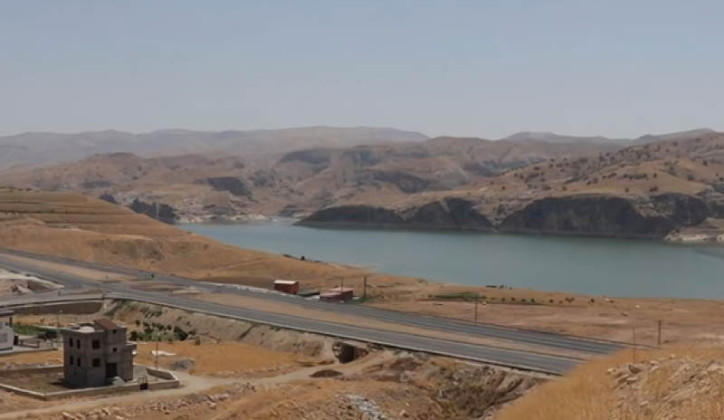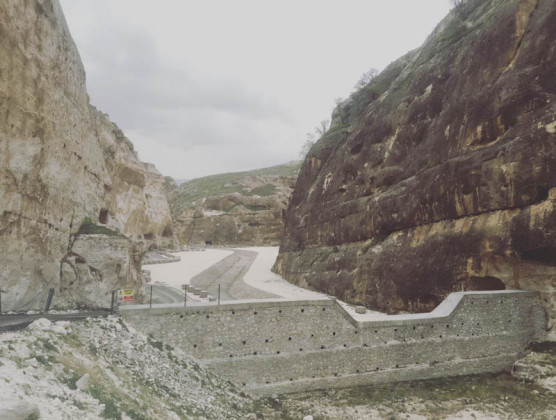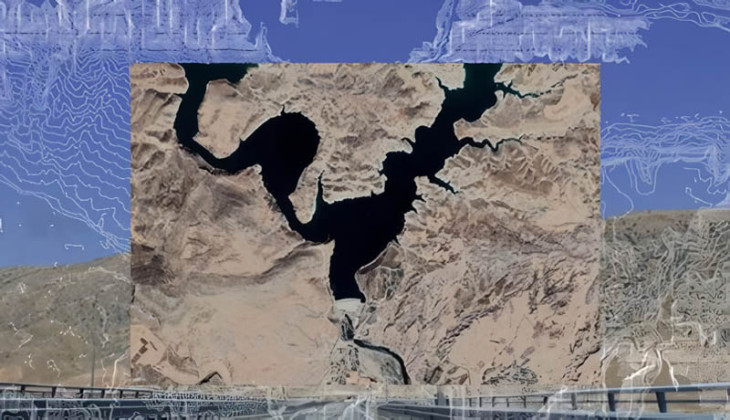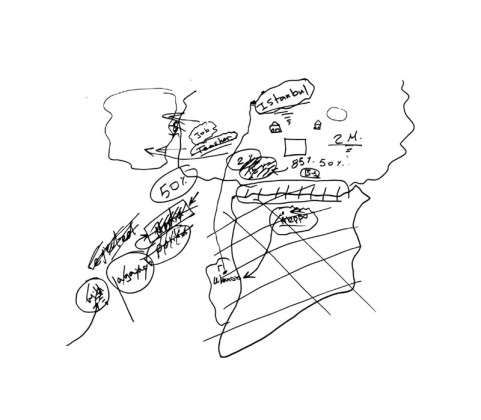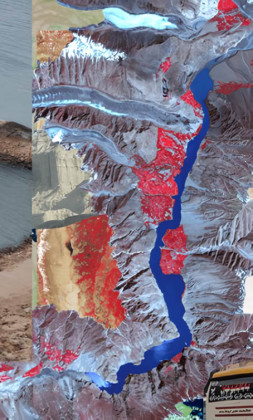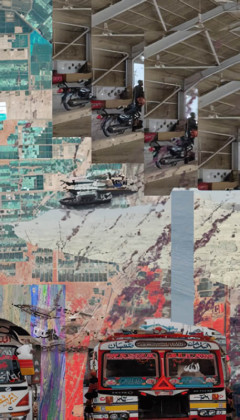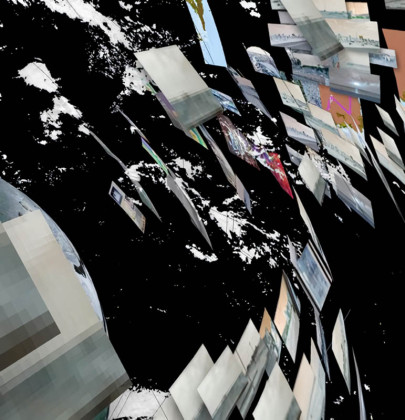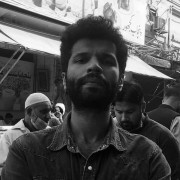On Survival Methodologies
Intimate Experiences, Emotional Witnesses, and The Patchy Representations...
How does art produce the knowledge of social space? Here, while asking this question; I'm carefully leaning on Latour's concept of collectivities.1 So, taking this concept into account, I'd like to pose the most basic question. What is research? Is the coexistence of collectivities, that is, the spatiality of social life, a process that takes place during research? Or is it an experience in and of itself? When we speak of research, do we mean the modernist approach of the twentieth century? Or are we talking about what Sara Ahmed discusses in queer phenomenology?2 In other words, how can we talk about multiple subjects or multiple objects at once, how can we queer knowledge? When we talk about research and methods, is there a way to consider social justice and thus positionality beyond the dichotomy of researcher and social space? In this essay, I will attempt to juxtapose these questions together by drawing on the 17th Istanbul Biennial titled Displacement: Entangled Topographies, directed by Arazi Assembly, and Topological Atlas.3
It is a kind of metaphorical title. This was because I wanted to start with some questions about research method philosophy, rather than just artistic research or social science methods. For example, the question of how to do research? Or the question of how to deal with the relationship between subjectivity and objectivity? These questions have recently re-emerged due to a debate over the last two decades. That is, how art has produced or should produce knowledge about social space? What is the role of art-act in the production of knowledge about social space? This is the only question I will try to elaborate here. Second, we often talk about artistic research, but what is this research? Is it a ‘personal research’ that the artist does as a researcher? We know that this debate is not a new phenomenon of the twenty-first century, but has been going on for centuries. Many travel writers, researchers, and artists were constantly inventing or exploring societies, communities, geographies, and other types of places and sites.
We also know that these “inventions” were followed by a series of “representational” critical ruptures. After the 1960s, the tension between invention and representation against social sciences was precisely at this point. There is a struggle within the discourse of the "will to know"4 about how to deal with this conflict, particularly in post-colonial studies. Perhaps the question here is, who would want to live in such a state of flux? "No one, no one wants to live in such fixity"5 Bhabha responds to Edward Said in 1994. Gayatri also writes similarly in the seminar of Thinking Translation, "Constantly saying others are bad does not mean we are good. There is always double bind"6 Thus, it seems important to ask here whether there is a third way out of the linear, symmetrical, fixed, and antagonistic fixity of representation. That is, if ther is a way out to consider what Bhabha and Gayathri suggests in order to move beyond fixity and embrace double bind. At this point, Homi Bhabha's work "The Location of Culture 1994" resonates. In his work, there is a suggestion about “third space”, in relation to Bhabha's concepts, this state is liminality, in-betweenness, interstitiality, hybridity which later correlate with negotiation, recognition, and invitation.7 Bhabha's third space is assumed here as an "asymmetrical" gathering that was ironically never previously clearly thought in postcolonial situation. In the late twentieth century, this state of asymmetric gathering in postcolonial studies begins to develop significant cross-methodological approaches in the social sciences and more diverse artistic practices.
Therefore, the rupture of representation is not something "new" that researchers or artists deal with. However, this neoclassical concept of invention may need to be unlearned8, that is to learn to unlearn the fixed idea of representation and learn to re-learn small fragments of reflexivity from which works of artistic research working in different geographies emerges with self reflection. In this biennial, various types of methodology appear to be developing. I've noticed that these artists wants to deal with new methods. I recently witnessed a discussion about interdisciplinarity and transdisciplinarity at the 17 Bienale Müze Gazhane. What strucks me later about this discussion was when we speak of "disciplines," each discipline has its own conservatism of knowledge, information extraction, reality experience, or object experience as subjectivity. So, the questions of "self-reflexivity" appears to be important here. Who am I as a subject? What is my background? Where do I come from? There were numerous questions that most artistic research raise here. Perhaps it is also important to understand how we ask questions collectively? What exactly is collective knowledge? What is the result of a small group of artists and experiences working together to produce knowledge? In this biennale, as mentioned earlier collective -learning and unlearning- appears to be the most important element.
The other important aspect is artistic research with the classical question, what is the result of this artistic research? What is the final product? Or, as I previously posed, is artistic research a "process" in and of itself? Is this the point at which the process itself becomes an artistic experience? I do not just mean the artistic experience, but also the collective experience and the production of knowledge. This biennial appears to be a juxtaposition of human and non-human elements, with layers of various geographies and communities emerging. For instance, the Arazi Assembly9 that research in Hasankeyf functions as a metaphorical element of thought through the water and river that surround it. It shows how villages, urban areas, and communities -indeed, everything- change simultaneously.
That is why I believe it is critical to discuss this biennial here. In terms of ‘research’ it appears that the question of what kinds of artistic phenomenological experiences are involved is worthwhile. At the same time, there is the issue of how these various geographies relate to one another. There are numerous facts about intensive capitalist production, transformation and its effects on landscape change, climate change effects, and migrations in these geographies. These effects can be observed in various ways across different geographies, but the questions remain the same. In other words, many of the things we know on a geographical, urban, and even regional scale are very similar to what is happening simultaneously.
There are many critical artistic practices that have to do with the production of space and natural space in general. These are practices that emerge from architectural and sociological research. The research involved here provides a wide range of information to the architects and artists. They produce a wide range of representations, but the interesting aspect being that -art research has been fetishized in recent years. Adorno defines art as appearance at its peak. The "non-appearance" is the source of this appearance.10 In other words, it once again warns the enlightened mind. Even if this warning is too fetishistic for art, it provides a new space or platform of “solidarity” to begin a dialogue. Why do we want to participate or become more involved in the research process? The question remains the same each time. As if we want to take two steps forward, three steps back, five steps forward and four steps back. Why is there such a back and forth? And why do we want to do it as a collective? And not alone. If that's the case, I believe there is an ethical issue underlying the social justice responsibility of the art act. It's critical to look at the world through the lens of social justice. This determines the artist's position in the research.
To elaborate on what we see in this biennale, the idea behind "working together" emerges with various mediums. The work produced here includes occasional films, articles, and large-scale workshops. So, there is not just one way of representation. That's just the first stage of the research. The research has many facets and seems to be very situational. These regions are traumatic and diverse. These places are very familiar with forced evacuation and other types of conflict. These places are also very familiar with immigration. Anatolia is, in fact, the source of migration. Over time, it forms a path from east to west. As a result, these areas have experienced a significant refugee crisis in recent years, and the problem of colonization and decolonization has become extremely diverse in these areas.
When considering both the human and non-human worlds together. It is impossible to separate them from the production of space. An attempt has been made here to show how space is produced, what it conceals, and the function of infrastructure? Everything is inextricably linked. Geographical studies therefore entails a very thorough research on infrastructure. For example, what does the term "dam" mean? What exactly does the term "highway" mean? What does it have to do with colonization? How does it relate to displacement of communities? What are the consequences of water scarcity? What are the impacts of flora? These are important questions that need to ask to see the big picture, but they also need to apply scale. Because they are significant in terms of the spatial scale discussed in the biennial. These various regions are linked to immigration to another country or region. The scale then quickly spreads to another continent. As a result, scale is critical in this context.
The archive is another factor that digs deep into history. In this biennial, for instance, video archiving seems to transform different kinds of videograms into archival platforms. Recently there have been long discussions about archive. Archiving (not in the classical sense), that is related to art historians or architectural historians not in the sense in which archive is used to preserve and hide. Rather, archive, where it is unfold to the public without censorship. Archive where other things are revealed together and witnessed by public without hesitation. This biennial was more about how to reactivate some archives. i.e. autonomous archiving. It was about evacuation and immigration in Eastern Turkey. What kind of archive is highlighted and what kind of exhibition is made of that archive? In other words, this biennial is about research, archiving and mapping, three things comes together. It is an essential tool to collect different kinds of archival material (e.g. films, photographs or other documents). How can one reactivate it artistically? It has the potential to create a kind of discursive platform for these materials. So it's important in the sense where most archives organize information, historical and conservative documents. They have a kind of organizational function. So the question is how can we use archives? How can an artistic methodology be created with them? That was another concern of this biennial, which is to remove the classical form of the conservative archive from the archive.
Through field mapping, how does nature act as a mediator in the region? Because, by analyzing these areas, we can begin to understand the structure of labor, ethnicity, ethnic communities, and migrations, because, interestingly, a physical institution brings various types of information to the surface. It is both a theoretical and practical methodology for thinking about archive. Along with archiving; mapping also introduces a new power structure, form of power, and statecraft to the region. It demonstrates how non-human elements such as border lines, checkpoints, water dams, and highways influence the region.
The relationship between landscape, mapping, and expropriation is closely linked, because archiving always justifies expropriation or the conversion of land. When we talk about natural areas, we mean that they are crafted and have control over the land. We can discuss different types of natural areas, such as an idyllic-looking pastureland or a militarized area that serves as a weapon. So it will be interesting to see what kind of visual change we can achieve. The mapping shows that all these areas have a different temporality. On the one hand, there is a supra-urban production, but on the other hand, there is an archaeological mythology with different temporalities. In a way, it is very interesting to see nature as a fetish object beyond linear time and artificiality.
In this moving image, "Lines of Displacement," focuses on the Hasankeyf and Tigris rivers, which are affected by state-led dam projects. It is a collection of research materials and maps created with narrative. Here, moving images invites the viewer to experience the destruction of the Hasankeyf and the dam for the Tigris and its catchment, landscape and history through visual expression. It is interesting how in this case the moving image itself becomes an investigation. The moving image as a research method is an investigation in itself. Hasan Keyf is disappearing due to rapid urbanization. What does it take to raise a village and create a park? What changes the area of the dam to get more water, electricity or water reserves? What does it mean to build dams, remove vegetation and destroy villages, roots and cultural heritage?
They are enforcing a conservation law, an ecological urgency, and expropriating to newly acquired land. These scenarios are also common in places like India, Pakistan, and Palestine. There is a sense of displacement and transformation. This has happened here in Hasankeyf, as well as in many Kurdish villages along the river. It will be interesting to see how the state structure changes as people advocate for more and more water for ecological infrastructure. Water sources are being studied, but the results are inconclusive. The result is that the Syrian border controls lands, towns and villages that are easy to shape and expropriate. This is a way to begin understanding that power is manifested in many places through neoliberal strategies or maneuvers.
It is also critical to understand these regions through non-human elements along the human world, as all of these relationships, complexities, and cosmologies are influenced by the Anthropocene concept. A reactive view of the Anthropocene is highly critical of Donna Haraway's statements in her book "Chthulucene," which say -End of the World, disaster is on the way- are not going to help us survive.11 We must ask ourselves what survival is, what alternatives to survival might exist, that we must survive, and that we must survive collectively. There is a need to consider what is nearby (a plant, a river, a human). According to this phenomenology, we must first create our experiences before delving into the issues.
There is an article by Anna Tsing co-authored with her colleague in 2019 called Patchy Anthropocene.12 This was a debate in the '90s in film and video ethnography as well as in anthropology. How do we really want to interact with the field, what is the way of this interaction? And what is the way to destroy the distinction or duality between subjectivity and objectivity? What is the way to abolish the exploiter-exploited distinction? What is the way to abolish the distinction between nature and society? All these binary structures are used in social sciences and artistic studies. We are still in this tension, we are struggling, how can we go beyond that? And how can we discuss this distinction theoretically and practically?
This Patchy Anthropocene definition comes into play here. This definition, especially the Topological Atlas, represents the random, patchy sphere, namely the Earth, in the journey of the undocumented immigrant. It embodies the patchy perspective to transcend and privilege the fragile relationships, modes of exchange, and forms of survival that are part of the daily realities of displacement. It is not possible to represent complete empirical knowledge of everything at the same time. Because everything appears to be in disarray here. Trauma, evacuation, space production, and displacement all occur at the same time. What is the role of social space here, what is the mediator of social space? What do the hidden elements offer me? This is because everything is very patchy here and it is not possible to have a holistic view of the representation of information.
The researcher can discuss a wide range of situational information based on empirical facts. There is a risk of producing relative knowledge as well as the risk of "relativism." But there are times when we really want to "hold" something. It's a challenge for artistic research. So, on the one hand, we like how the information is situational and fluid. We value both individual and collective experience. But we also want to hold onto something and find a representation for it. We yearn for social justice and express our thoughts on it. This is the difficult part, and the formula seems to be vague, but atleast we know it's a struggle. Perhaps it's important to be aware of it. Rather than asking how we can avoid disaster, it's important to ask what factors influence survival?
When discussing Sara Ahmed's queer phenomenology, I ask similar questions in order to research the phenomenological approach. I am looking for the experience of social space, social justice, and the relationship between subject and object. Taken together, I'm looking for artistic phenomenological methods. It's not romantic or fetishistic; rather, it calls into question a more collective understanding with all kinds of elements, including non-humans.
This is the final example I'd like to provide. It is a mind map. A journey from Pakistan to Turkey. The immediate question that comes in my mind is, how can research be conducted in such a traumatic, intensely transformative field? How can we possibly resist? How can we consider social justice? Can we go philosophical, dealing with various methodologies and concepts like archiving, moving image, performance, or collective walking? What could be the phenomenology experience? How are we going to read and discuss them? Colonial and decolonial methodologies are always a major concern in such a region.
I am not only referring to historical colonialism, but also to ongoing colonialism, specifically "censorship by other forms of forced eviction." How can we unfold them? And how can we counteract it? What role does artistic methodology play in this? What exactly is political action? What exactly is artistic action, or the act itself? How do these actions interact and how do they diverge? Where does one draw the line? And who is there to witness? Plants witnesses, as do human beings, animals, and nature. As a result, the issue of "witness" is very complex here. However, this state of witnessing can sometimes consist of the nearest experience to oneself. Sometimes this testimony may be the closest testimony to your memory/past. Because it was always on the table at the Biennial, particularly among Pakistani artists and activists. How should immigrants' journeys, which include emotional testimony, incalculability, ideas of uncertainty, incomprehensible abstract, ambiguous, fragile, forward and backward movement, and patchy representation in relation to their blurred and unstable can be represented?
In conclusion, I'd like to summarize how important queer methodologies are primarily because they attempt to address the ongoing debate about the duality of subjectivity and object in twentieth-century philosophy and sociology. Then it attempts to present relational ontology. The research demonstrates how, as seen at the Biennial, we can work on the relational ontological pathway and methodology. Karen Barad's writing on the ethics of “intera-action”13 understanding is also helpful in this context. Kathryn Youssef is a geographer who has written books about racism, the "black anthropocene"14 and how the anthropocene was deeply rooted in colonization processes and racial history. The significance of artistic practice alongside academic, social scientist, or anthropologist research. This artistic act has a connection to recent history. It is a history that bears witness to the most recent present. As Walter Benjamin put it, we are in a situation of witnessing, which he refers to as "constituting" a "now" in "this time."15 This present moment manifests and deals with the intersection of past and future.
Referances
1 The concept of collectivites, developed with reference to Bruno Latour's "Parliament of Things", is a set of assemblies where human and non-human produce a policy of coexistence and common life. The World Parliament, which puts life at the center, establishes a mesh between 'politics' and 'science' and presents a projection in which people, animals, streams, reeds, plants, forests and all other (organic/inorganic) things have a say. See also: Latour, B. (2005). Reassembling The Social: An Introduction to Actor-Network Theory. New York: Oxford University Press. See Also: (Müller, Martin. “Assemblages and Actor-Networks: Rethinking Socio-Material Power, Politics and Space.” Geography Compass 9, no. 1 (2015): 2 741.
https://doi.org/10.1111/gec3.12192)
2 Ahmed, S. (2006). Duke University Press -Queer Phenomenology. Duke University Press -Queer Phenomenology. Retrieved January 3, 2023, from https://www.dukeupress.edu/queer-phenomenology
3 Arazi Kolektifi ve Topolojik Atlas. (2022). Arazi Kolektifi Ve Topolojik Atlas. Retrieved January 3, 2023, from https://bienal.iksv.org/tr/17b-sanatcilar/arazi-kolektifi-ve-topolojik-atlas. See also: (http://araziassembly.org), See also: (https://topologicalatlas.net)
4 Foucualt, 1982-83 The first lectures he gave at the Colege de France Kant's What is Enlightenment? The issue and the fact that the German word “Aufklarung” is preferred is problematic, herein lies the problematic of the ‘will to know,’ Also see: (The Government of Self and Others. Lectures at Collège de France, Macmillan, 26-28.) Also see: (What is Enlightenment? in Rabinow (P.), éd., The Foucault Reader, New York, Pantheon Books, 32-50.)
5 Chakarbarti, S. (2012). Moving Beyond Edward Said: Homi Bhabha and The Problem of Postcolonial Representation, International Studies, Interdisciplinary Political and Cultural Journal.
6 Library, A. (2022, November 30). Thinking Translation with Gayatri Spivak and Emily Apter. YouTube. Retrieved January 5, 2023, from https://www.youtube.com/watch?v=igWIUCeuOHA
7 Bhabha, H. K. (1994). The Location of Culture. Routledge. Also see (Introduction. In Hybridity and Postcolonialism: Twentieth-Century Indian Litera- ture, ed. Monika Fludernik, 1-18. Tübingen DE: Stauffenburg.) Also see: (Signs of Our Time: Discussion of Homi Bhabhas The Location of Culture. Third Text 28-29: 5-24.)
8 To deny our privileges and what we learned in academia, which Spivak emphasizes as privileged, is the aforementioned challenge and intervention for “un-learning”. Also see: (Danius, S., Jonsson, S., & Spivak, G. C. (1993). An Interview with Gayatri Chakravorty Spivak. Boundary 2, 20(2), 24–50. https://doi.org/10.2307/303357)
9 Arazi Kolektifi ve Topolojik Atlas. (2022). Arazi Kolektifi Ve Topolojik Atlas. Retrieved January 3, 2023, from https://bienal.iksv.org/tr/17b-sanatcilar/arazi-kolektifi-ve-topolojik-atlas
10 Bernstein, J. M. (2003). Görünüşü Kurtarmak Niye? Metafizik Deneyim ve Etiğin Olabilirliği. Cogito, (36), 211–233.
11 Haraway, D. (2016). Duke University Press -Staying with the Trouble. Duke University Press -Staying With the Trouble. Retrieved January 5, 2023, from https://www.dukeupress.edu/staying-with-the-trouble
12 Environmental anthropologist Anna Tsing proposes the new environmental keyword "Patchy Anthropocene" in a recent paper with colleagues Andrew S. Mathews and Nils Bubandt. See also: (Tsing, Bubandt, Mathews, 2019. University of Chicago Press Journals: Cookie absent. RCNi Company Limited. Retrieved January 3, 2019, from https://www.journals.uchicago.edu/doi/full/10.1086/703391)
13 JUELSKJÆR. M, SCHWENNESEN. N (2012). Intra-active Entanglements – An Interview with Karen Barad. KVINDER, KØN &FORSKNING NR. 1-2.
14 Yousaf, K. (2018), A Billion Black Anthropocenes or None, Univ Of Minnesota Press.
15 Benjamin, W. (1942), Thesis on the Philosophy of History, in illumination, Harry Zohn, trans, (New York: Schocken Books, 1969)
 17.04.2023
17.04.2023



